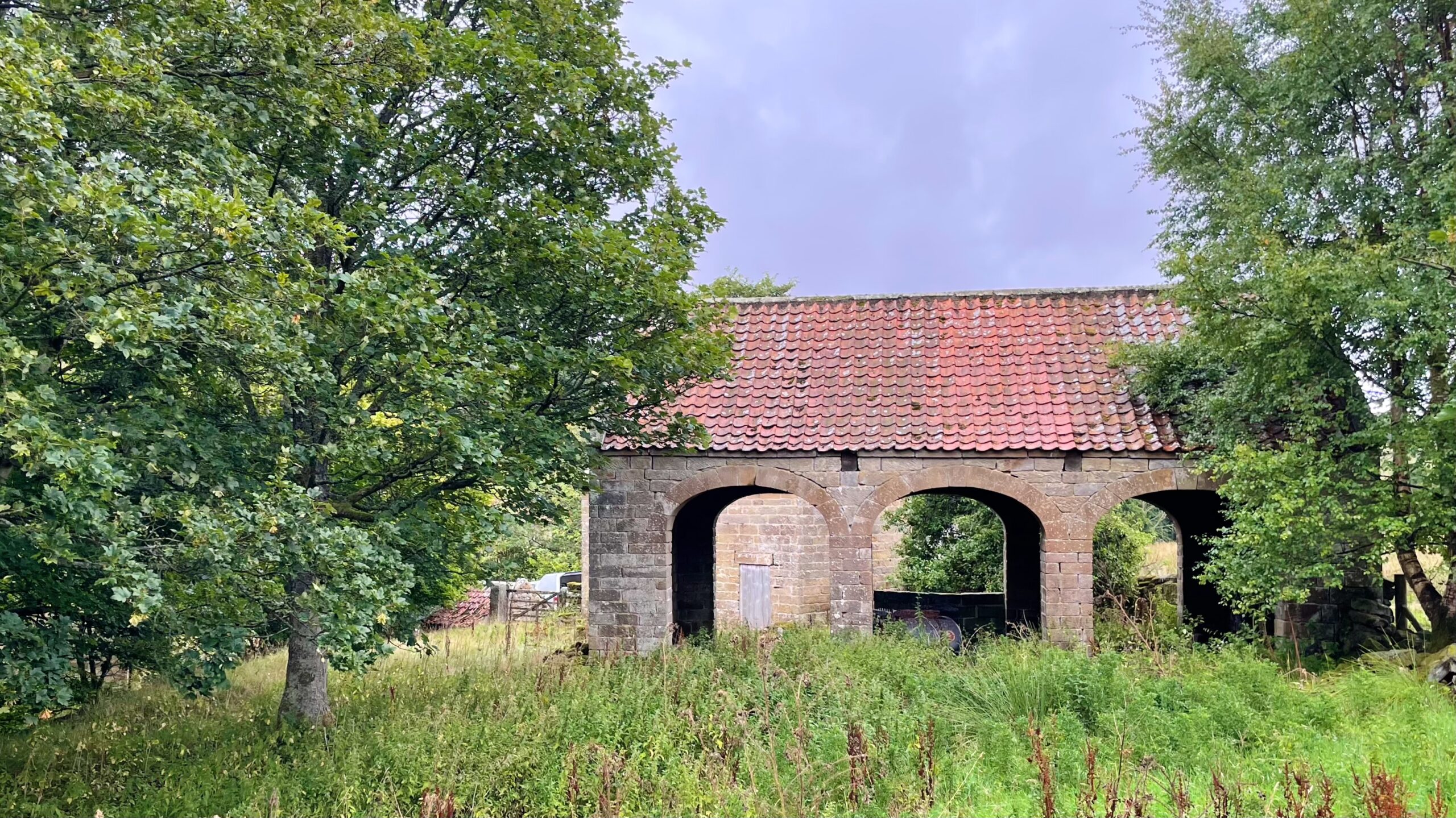Tucked away behind Bransdale Mill stands this elegant three-bay hay barn, built in stone and retiled in the 1980s. Once, each arched entrance was fitted with sturdy wooden double doors, a reminder of its working life1National Trust Heritage Records Online. Record ID: 31372 / MNA144358. Barn, Bransdale Mill. https://heritagerecords.nationaltrust.org.uk/HBSMR/MonRecord.aspx?uid=MNA144358.
The barn belongs to the story of the Bransdale Mill complex, largely shaped in the 18th century under William Strickland. Strickland arrived in 1811 with his two children, Elizabeth and Emmanuel, later remarrying and raising three more sons: John, Noah, and Edmund. With Emmanuel’s help, he transformed the modest mill into a thriving industrial hub. New wagon sheds, threshing sheds, stables, pigsties, forges, and houses rose alongside a vast 16-foot overshot waterwheel that multiplied the mill’s output. Strickland was meticulous. He built sundials, carved inscriptions, paved the river fords, and gave every stone its proper finish. The result was both practical and finely crafted, a model of ordered ambition2National Trust. Information booklet. Bransdale Mill.
A separate hay barn was a sensible feature on larger farms. By 1780, the Dutch barn—partially open for ventilation—had become a common sight. After 1885, the design evolved into the iron-framed, open-sided structures still in use today3Wood, Eric S. “Historical Britain”. Page 89. The Harvill Press. 1997..
- 1National Trust Heritage Records Online. Record ID: 31372 / MNA144358. Barn, Bransdale Mill. https://heritagerecords.nationaltrust.org.uk/HBSMR/MonRecord.aspx?uid=MNA144358
- 2National Trust. Information booklet. Bransdale Mill.
- 3Wood, Eric S. “Historical Britain”. Page 89. The Harvill Press. 1997.

Leave a Reply